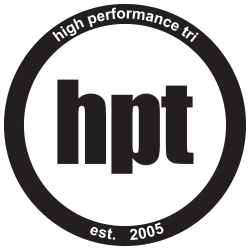Training Zones Deep Dive
Once you have become an endurance athlete you have entered the world of basing your intensity of training off specific training zones.
In the following article we will discuss why we need training zones, what they are and how you will use them.
Even though this stuff is very “sciencey” my goal is to make it as simple as possible to understand.
Why do we need training zones?
At the very core of why we use training zones is the principle fact that our body has 3 different energy systems. All of which are being used in varying amounts according to how hard or fast we are training or racing. The faster you go, the more carbohydrate you burn.
The harder this cyclist goes, the more carbohydrate and less fat is used. At 230watts you can see this athlete is at the fat / carbohydrate “crossover point” and as such has an equal contribution of fat and carbs as fuel. At 200watts their body is using the peak fat contribution to the energy demand.
The 3 energy systems are described below :
Aerobic - Uses fat and glycogen - low intensities and long durations
Anaerobic Glycolytic - uses glycogen - higher intensities and shorter durations
Anaerobic Phosphocreatine - very high speed and durations up to 10sec.
So excluding the use of the phosphocreatine system (apart from a surge or a sprint finish), we are mainly using the aerobic and the anaerobic glycolytic systems.
Important to note is that each athlete has their own individual contributions that they will use each system for exercise at different intensities which is called the athlete’s “metabolic pathway”.
At 300watts this athlete is meeting the energy demand 90% by the aerobic system and 10% by the anaerobic system.
What are the zones?
A little known fact about zones are that there are actually only 3 zones that can be tied to physiological markers. These markers are the turn points of Ventilatory Threshold 1 (VT1) and Ventilatory Threshold 2 (VT2). These coincide where the blood lactate levels reach approximately 2mmol and 4mmol respectively.
Any further zones than the basic 3 zones are actually only used to help the athlete target specific areas related to their training.
3 zones delineated by physiological turn points VT1 and VT2
The system we use at HPT - the 5 zone system where the green. and red zones are broken into 2.
How do we determine our zones and then use them practically?
Training in the correct zone is one of the most important things you can do as an athlete. The correct prescription and execution of training allows the body to develop the areas that need to be developed.
First part of that process is setting the correct zones. That can be done in a number of ways and established off maximum or your threshold heart rate. It can be done in the lab or in training.
Lab testing is the most accurate but is also expensive. Plus it isn’t as relatable to the real world as you are doing these tests in an unrealistic environment that isn’t as applicable to racing.
The more realistic approach is field testing using time trials and the standard measuring equipment of GPS watches, heart rate monitors and power meters. Then applying a zone calculator to set zones.
A really good mix of the two approaches is a very realistic method of using the INSCYD test. It is more accurate than basic field testing and has a deeper level of understanding your individual fuel use. This direct information can then be taken over to be very accurate with your race intensity modelling.
The baseline information I will need is:
400m swim (and corresponding heart rate)
20min bike power (and corresponding heart rate)
(10km bike TT speed if no power)5km run time (and corresponding heart rate)
Once we have the baseline information needed to set zones we can apply the calculator and they will appear in Training Peaks.
In Training Peaks I use the MyProCoach zones. I use this calculator as it is directly inline with the 5 zones I use and they have these zones in swim, bike and run.
Practical use of the training zones and their specific adaptations
Zone T1 - Improves blood flow without adding to training “stress”
Zone T2 - Improves aerobic adaptations and fat oxidisation within the muscles
Zone T3 - Improves aerobic adaptations and experience at 70.3 race intensity
Zone T4 - Improves lactate clearance and familiarisation with short course race intensity
Zone T5 - Improves Vo2 cardiovascular adaptations, lactate production rates and tolerance.
Above T5 is specifically for draft-legal and short course racing where repeated high-intensity short -duration efforts are used.
Conclusion
The major points to consider when using training zones are
We use them as a guide to train at the correct intensity so we are targeting the correct physiological adaptations.
According to your training intensity, this determines the percentages of the fuel and energy systems contributing the the energy demand.
We establish your zones using baseline information gathered from a number of different test methods. Mostly this is done using field testing (free and mostly accurate enough) but can be done in a lab (accurate, but more expensive and less realistic), or a hybrid of field testing with accurate analysis done via the INSCYD platform. (relatively inexpensive and very accurate)
It is important to always “check-in” on your zones. This can be done via a mix of correlating data coming through in training and racing files and doing quick check TT’s at regular intervals throughout the year.
Reference:
INSCYD app
High North Performance website
Stephen Seiler YouTube




